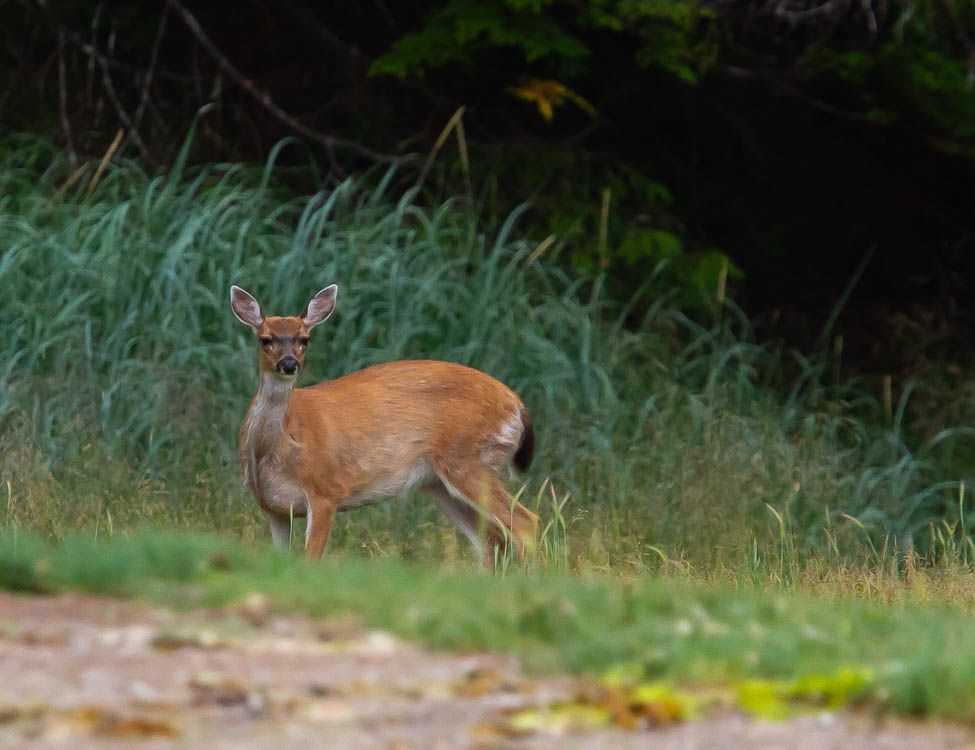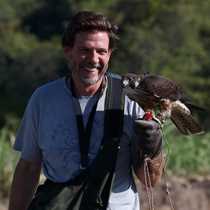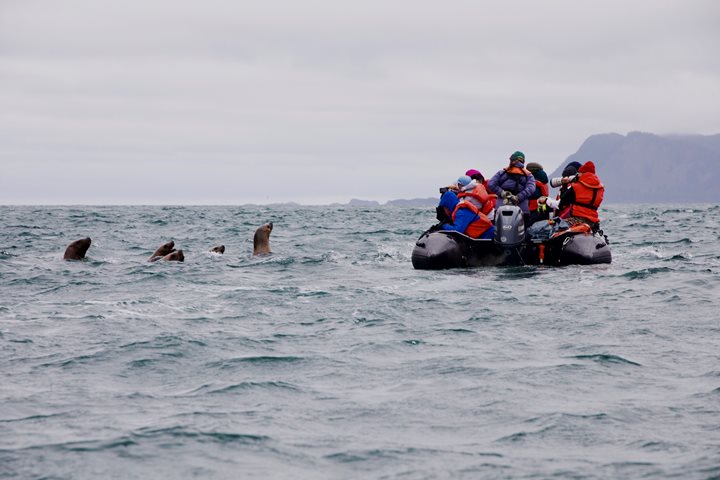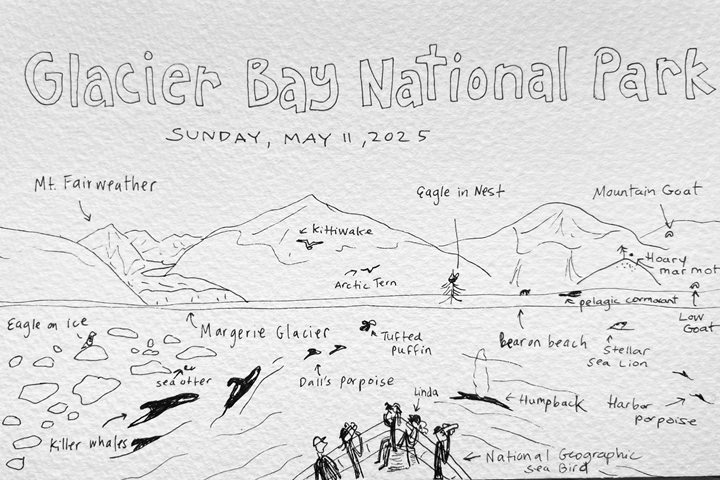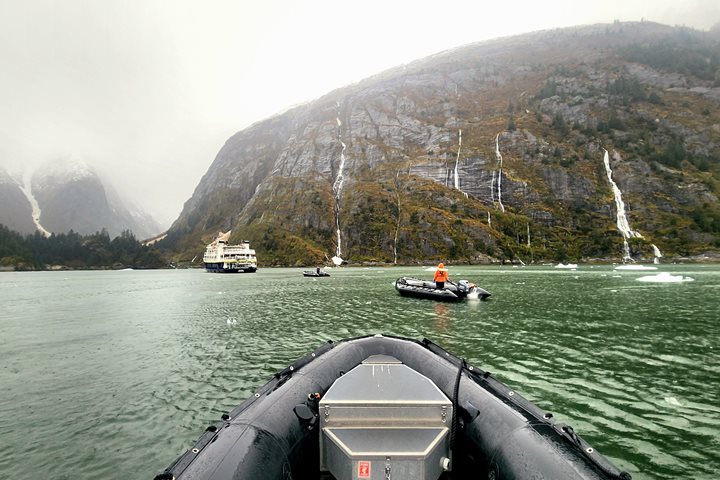The first morning of our expedition started early for many who enjoyed some time at the bow. National Geographic Sea Bird sailed along the shoreline of Chichagof Island on our way to Gypsum, a wonderful place to explore the forest by foot. There, we found the ruins of what was once a flourishing gypsum mine with a one-mile-long railroad system to transport the product to a dock. Ships could load the gypsum straight from the small train.
Later, we walked through a lush temperate rainforest, following bear trails and small salmon streams, finding our way through the wilderness without man-made trails. We listened to the birds, and learned about the vegetation, the ecology, and the mysterious inhabitants of the forest.
National Geographic Sea Bird repositioned to Freshwater Bay and a small cove called Pavlof Harbor. There we deployed kayaks and stand-up paddleboards. Surrounded by forest, we paddled on the calm waters of the bay. The water was clear, and we could see the bottom—and some of the marine creatures that live down there. Eagles soared above and a playful harbor seal showed interest in us, as it approached some of the kayaks and paddleboards.
We also explored the bay by boat to cover more distance and find interesting things. We discovered a bald eagle’s nest and learned about the history of their conservation. It was hard to believe that once these majestic creatures were on the brink of extinction, when today we see them almost everywhere! We saw one Sitka black-tailed deer that seemed unconcerned by our presence. One of the highlights of our explorations was spotting a group of harbor seals, resting on a rock.
Our day ended with a humpback whale encounter. Many of us stayed up after dinner, watching a few humpbacks near our ship. It was certainly a full day of exciting activities and with a fantastic end.

